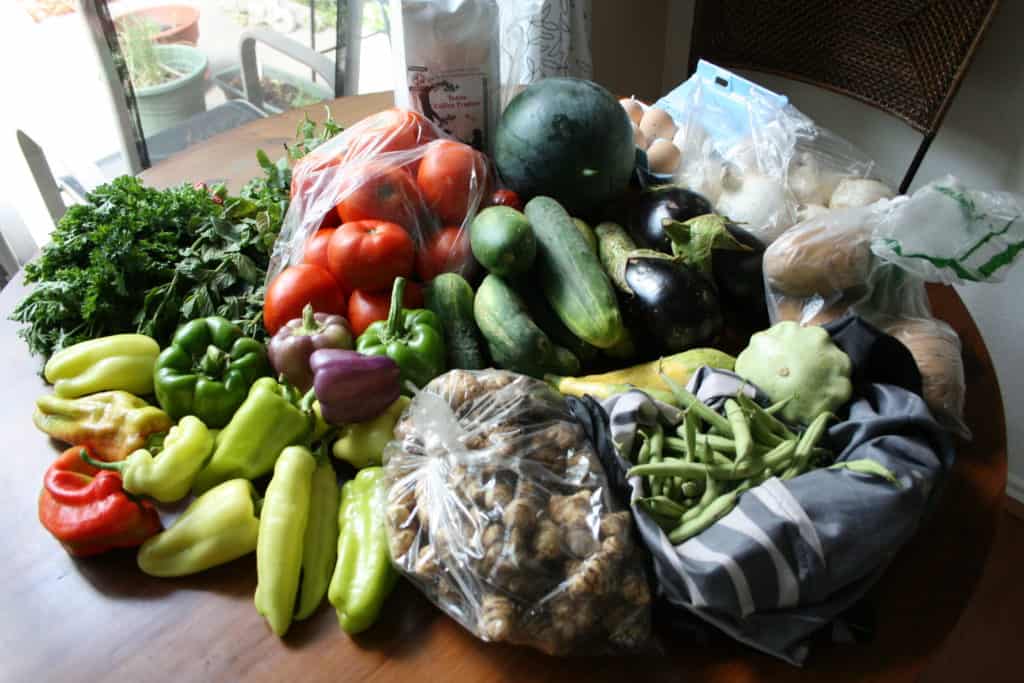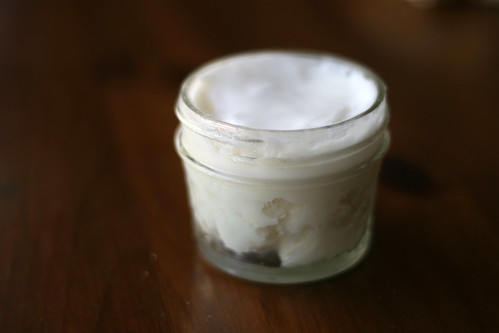This post contains affiliate links and may earn commissions on recommended products. As an Amazon Associate, I earn from qualifying purchases.
Spring has officially arrived, and with it comes a plethora of delicious spring vegetables!
Asparagus, artichokes, and carrots are just a few examples of the delicious options that are currently in season.
Eating seasonal produce helps support growers in your area. If you’re lucky enough to have a farmers’ market near you, this is the perfect time to see what spring vegetables are available!
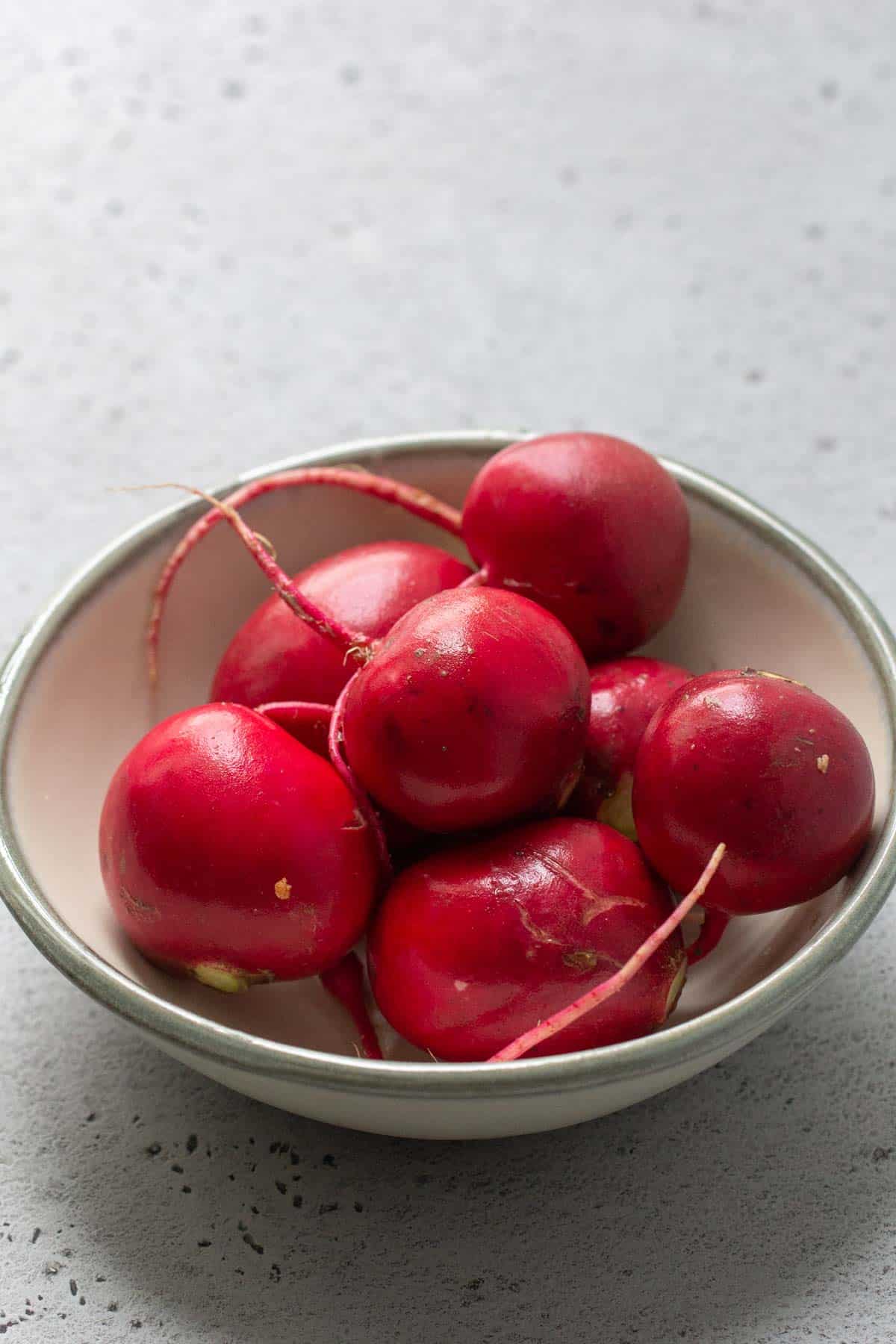
Taking cues from the season can also open the door to so many recipe possibilities. Whether you’re a novice or an expert in the kitchen, there’s always something new to discover.
Note that what’s in season will depend on your growing climate. If you live in northern areas, you might not see some items, like rhubarb or beans, until early summer.
Read on to find out more about seasonal spring vegetables.
Asparagus
Asparagus is one of the quintessential spring vegetables, playing a starring role in dishes from breakfast to dinner.
When picking asparagus, look for firm, straight spears with closed tips. You can choose thin or thick asparagus depending on your preferences and cooking method.
Thicker asparagus is great for roasting, while thin asparagus does well with quicker cooking methods, or even raw.
Look for other varieties of asparagus, too. Purple asparagus and white asparagus each lend a different flavor to the vegetable.
Enjoy this versatile vegetable roasted, steamed, pickled, or sautéed for a delicious and healthy meal.
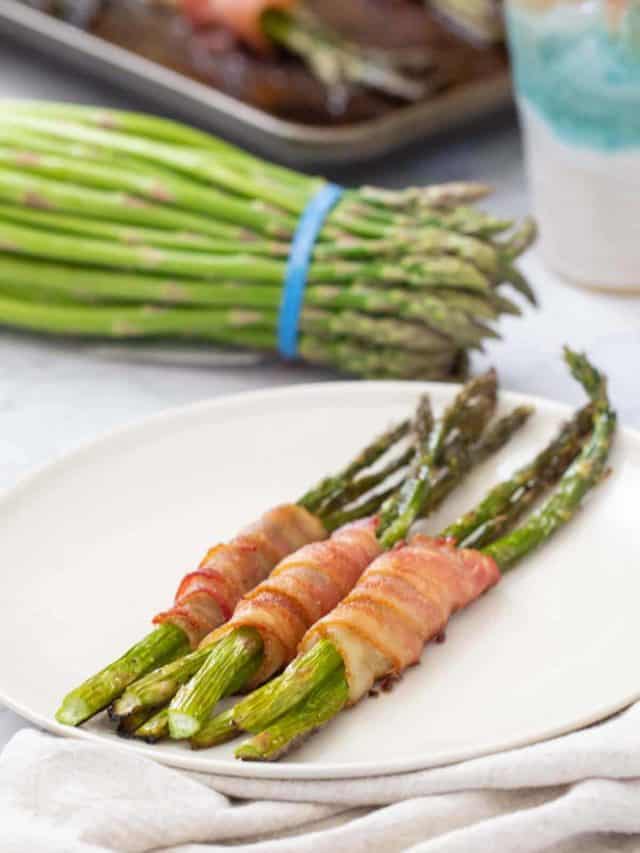
Peas
Fresh spring peas can be enjoyed straight from the vine, or used in your favorite dishes.
Sugar snap peas are generally eaten without their pods. Instead, the pods are opened and the peas are removed to add to dishes. However, you can eat the pods too if you like!
Snow peas are flatter with thinner skins. The peas inside do not plump up, so the entire pod is eaten. Snow peas are especially delicious in stir fries.
Artichokes
Fresh artichokes can be roasted, steamed, or even grilled.
When preparing artichokes, make sure to remove the spiny tips and outer layers of leaves, which will be too tough and fibrous to eat.
The heart of the artichoke is the most tender part and is often used to make spinach artichoke dip. You can also dip the cooked artichoke petals in aioli and enjoy that way.
Carrots
We may not think of carrots as seasonal, but they hit their sweet peak in springtime.
Enjoy carrots raw with your favorite dill dip or green onion dip, or shredded to make a vibrant carrot salad.
Carrots are wonderful roasted as well, or try maple glazed carrots, a quick and easy stovetop preparation.
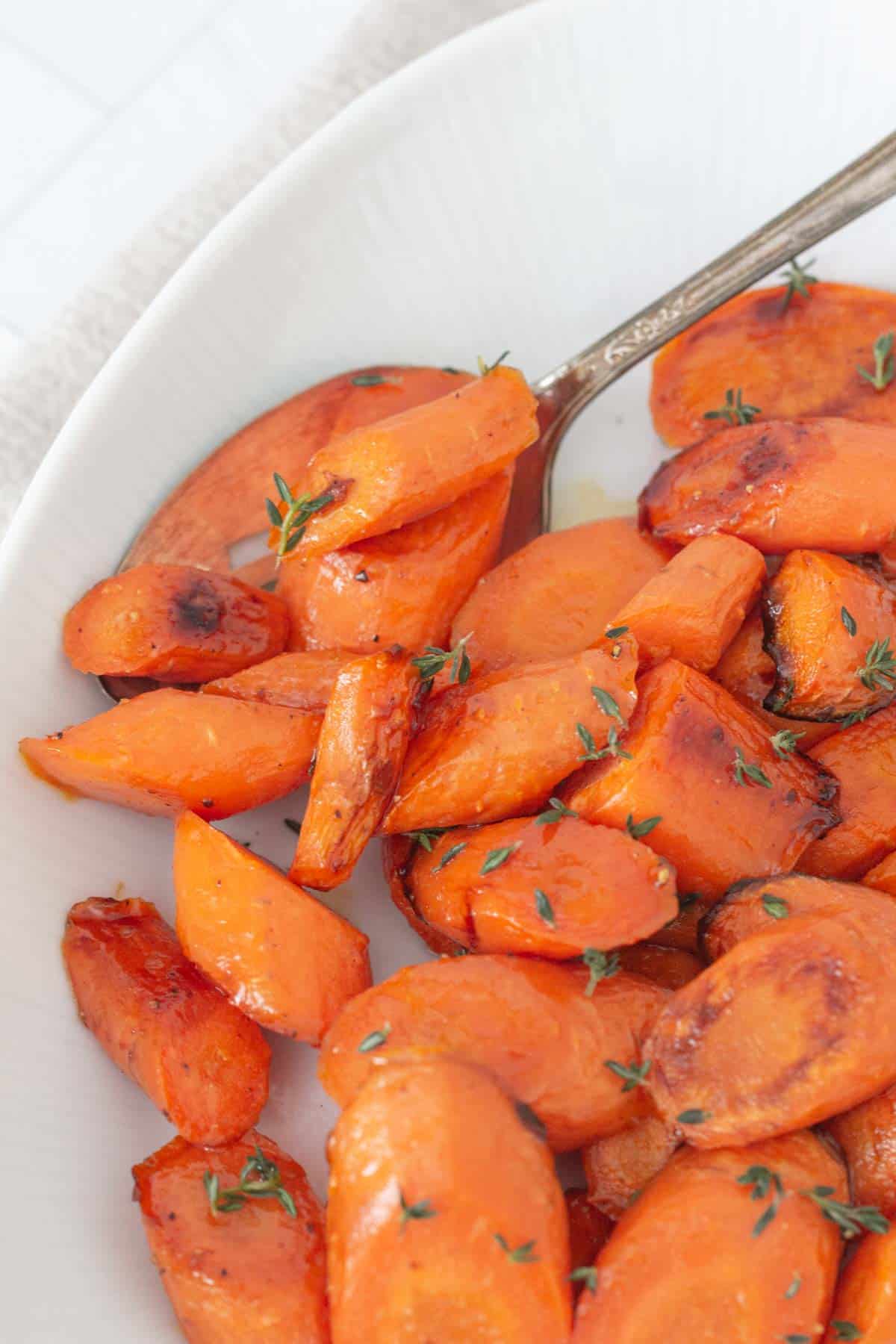
Radishes
Radishes come in many varieties, but in springtime the red cherry radishes and pinker French breakfast radish are popular at farmers markets and grocery stores alike.
Try radishes raw with high-quality soft butter and salt, or sliced thinly and turned into radish pickles.
For cooking, radishes are delicious sautéed with butter or roasted, which tames the natural spicy radish flavor. A sprinkle of salt is all you need to finish!
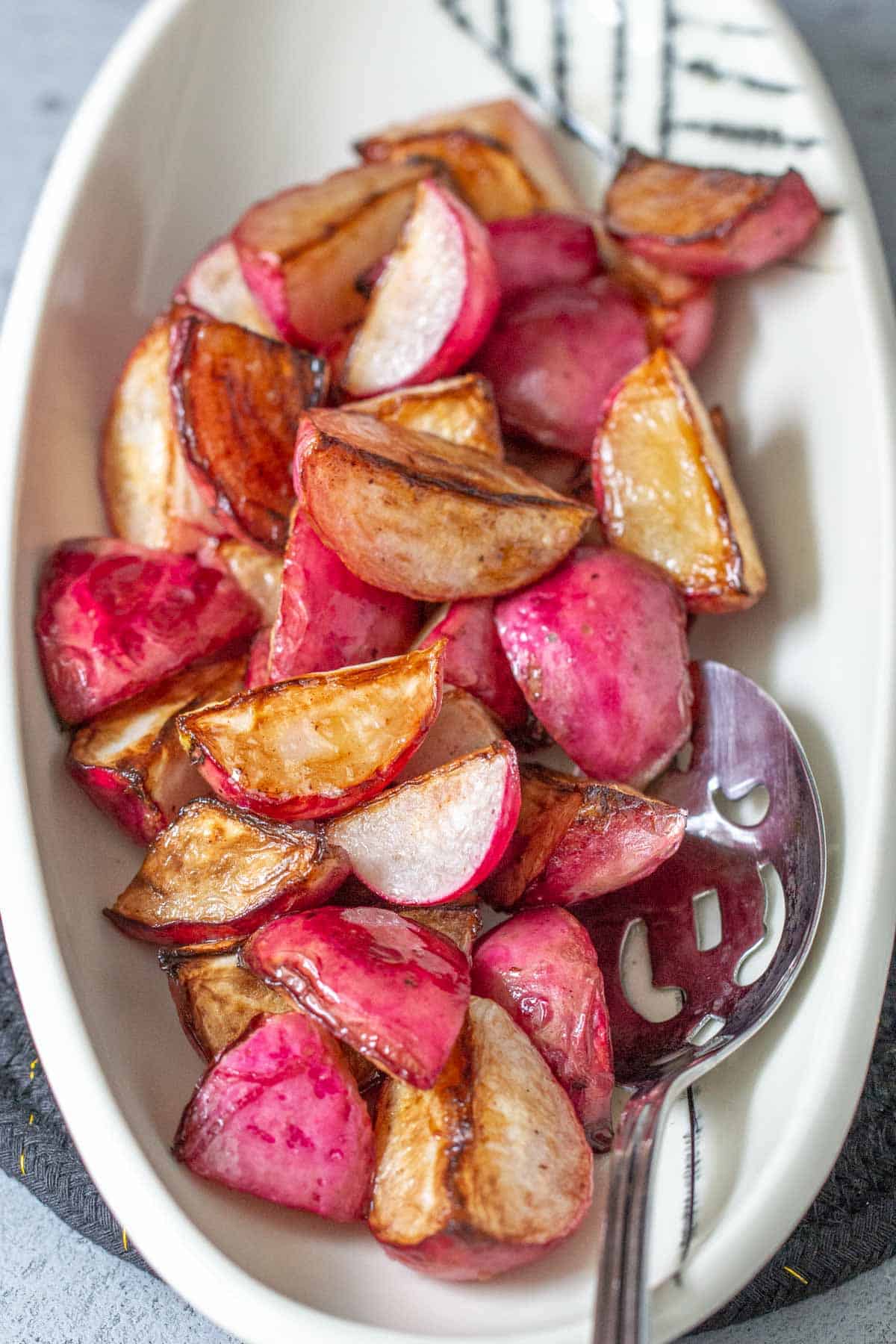
Leeks
Part of the same family as onions, leeks are ideal for adding to sautés or blending into soups.
Because the leaves on leeks grow together tightly, it can be difficult to clean leeks before cooking. Sandy grit and dirt is often trapped between the leaves.
The easiest way to prepare leeks and clean them is to first slice the leeks, then dunk into a large bowl of water. Use your hands to swirl the pieces around in the water, loosening any sand or dirt from the leeks.
The leeks should float will the dirt will sink. Scoop the leeks out with a skimmer, slotted spoon, or your hands.
Spring onions
Spring onions look somewhat like green onions (scallions), but have a larger bulb at the bottom. The green leaves are not as thick as on leeks, but still provide mild onion flavor.
You can use spring onions anywhere you’d use bulb or green onions. The greens make excellent garnishes for stir fry, grilled meats, and more.
Fennel
Fennel has a licorice flavor and some find it too strong, but cooking the bulbs tames it into a sweeter taste. Roast fennel bulbs to make carrot fennel soup, or enjoy as a side dish on its own.
Fennel can also be substituted for celery in any soup or stew, or sliced very thinly and added to salad.
Use fennel fronds for cooking fish and adding aromatic flavor. Simply create a bed of fennel in a pan and lay the fish on top, then bake.
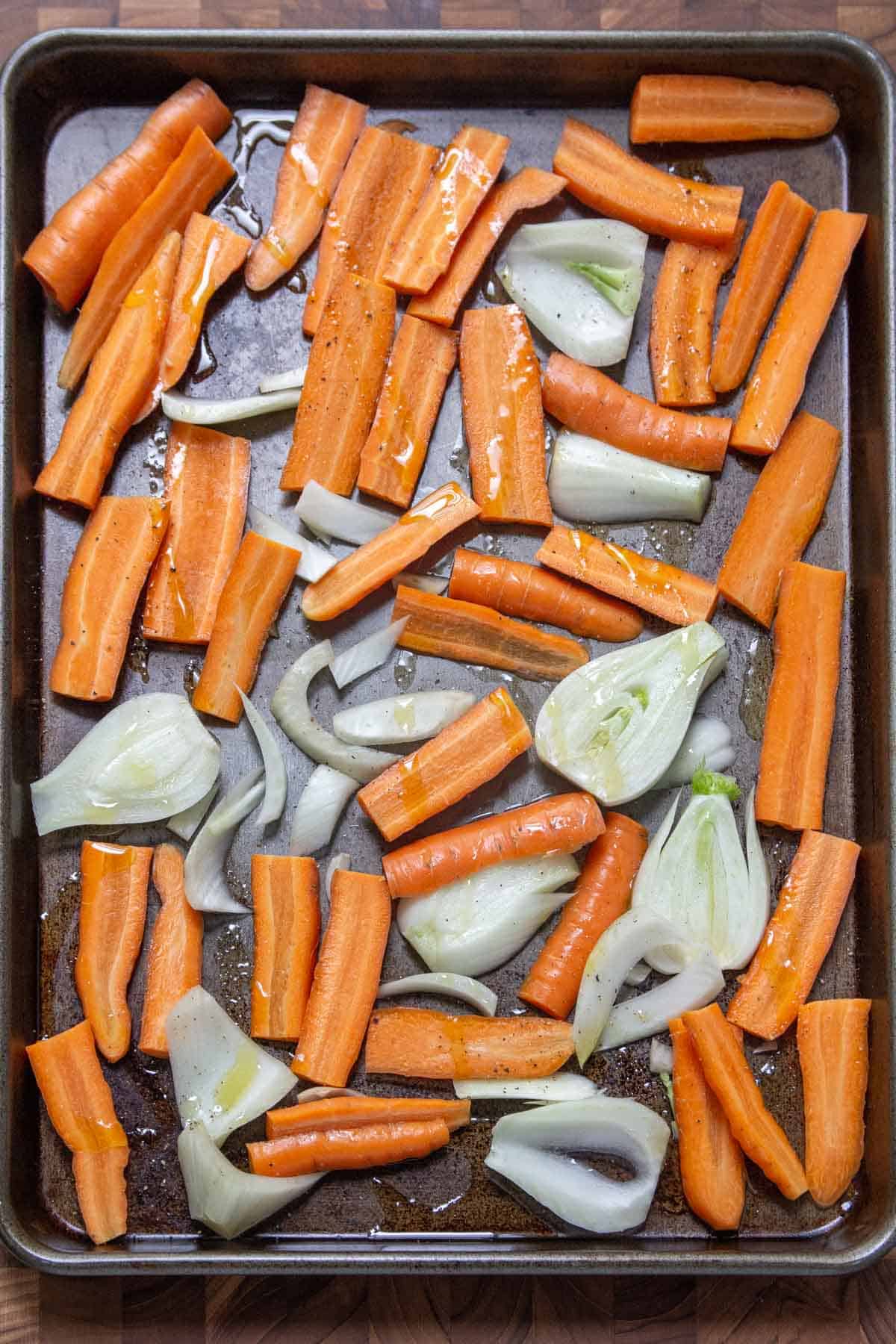
Broccoli
Broccoli can be prepared in a variety of ways, including steamed, roasted, and added to salads or soups. Try using broccoli in dishes like broccoli cheddar quiche, broccoli white bean salad, or cheesy broccoli toasts.
Roasted broccoli is a delicious option for those who prefer a slightly charred taste. Steaming broccoli is a great option as well, as it helps to retain nutrients.
Don’t forget that while most people use just the florets, the stems are edible as well! Cook them slightly longer than florets, or cut into smaller pieces, to ensure they are done all the way through.

Cabbage
Cabbage is a wonderful vegetable option thanks to how long it can last in the refrigerator. Store in a crisper drawer, and simply remove any outer leaves that have wilted before using.
Both purple and green cabbage are popular, but also look for other varieties such as Napa or Savoy.
Cabbage is classic for coleslaw, but you can also enjoy it cooked! Try in a pork cabbage skillet or simply roasted as cabbage “steaks.”
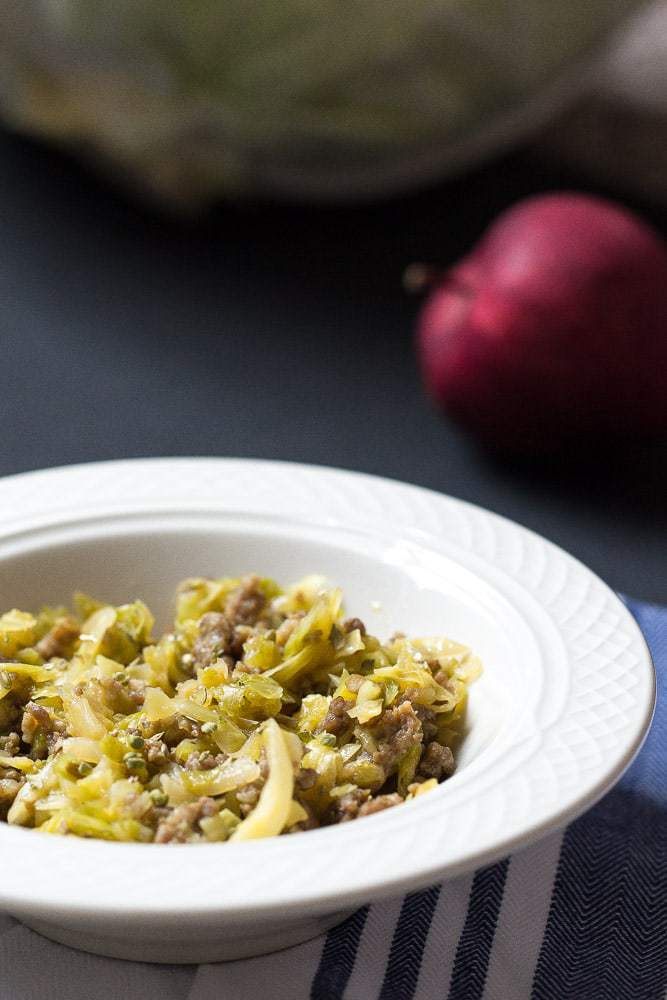
Beets
Earthy and lightly sweet, beets can be enjoyed in a variety of ways, from raw to roasted.
You might be familiar with red beets, but there are also golden beets, beautiful chioggia beets with striped insides, and other varieties that all have a slightly different taste.
Try pickled beets, which adds a sweet tangy flavor to the vegetable.
Cook beet greens as you would kale or collards, sautéing them in your preferred fat with garlic and salt.
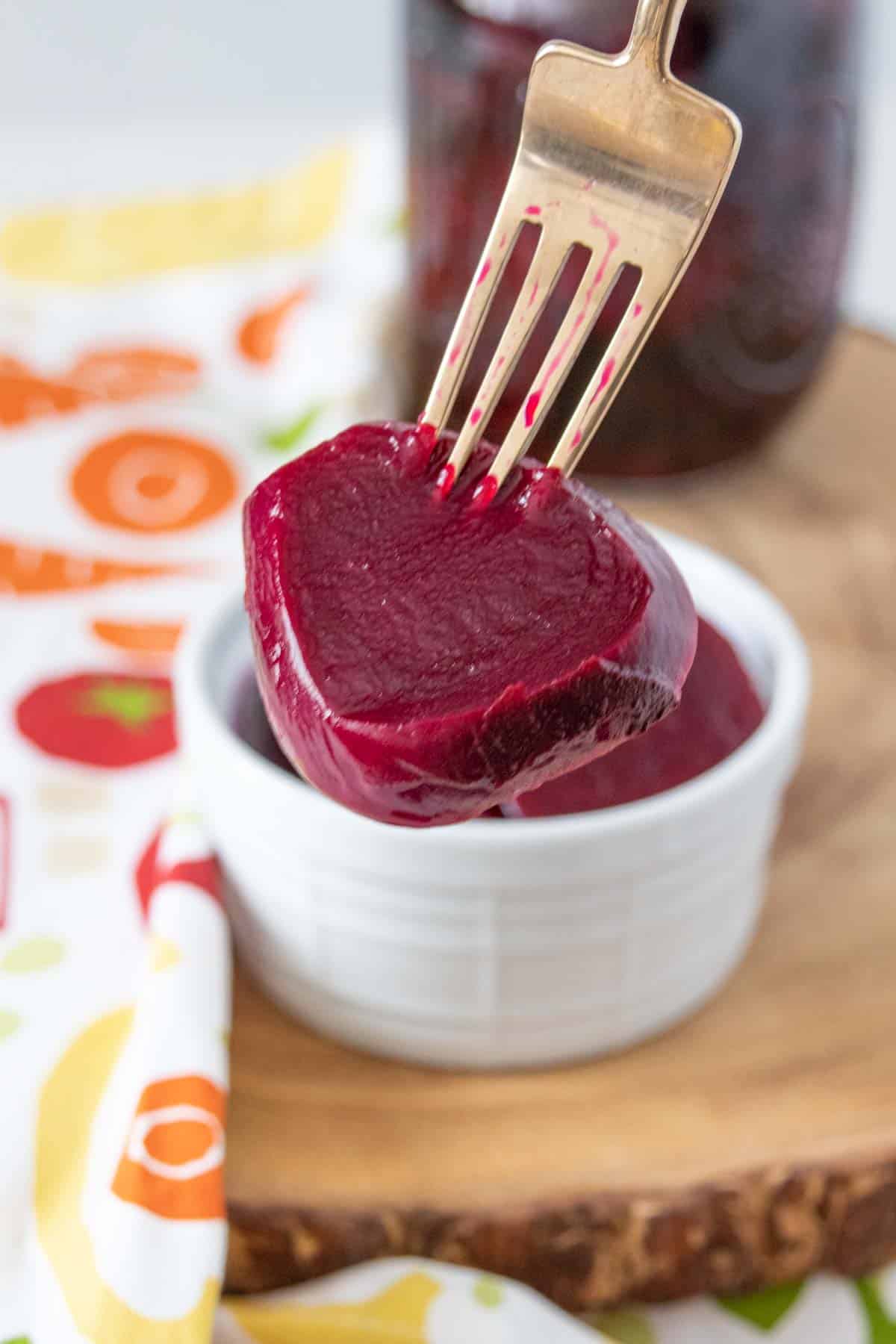
Cauliflower
When choosing cauliflower, look for firm heads that have tightly closed florets. Cauliflower only lasts up to 5 days in the refrigerator, so plan to use it soon after purchasing.
Cutting cauliflower is easiest when working from the bottom, slicing out the core before dividing the florets.
Use cauliflower in stir fry, chopped for salads, riced, roasted, or raw.
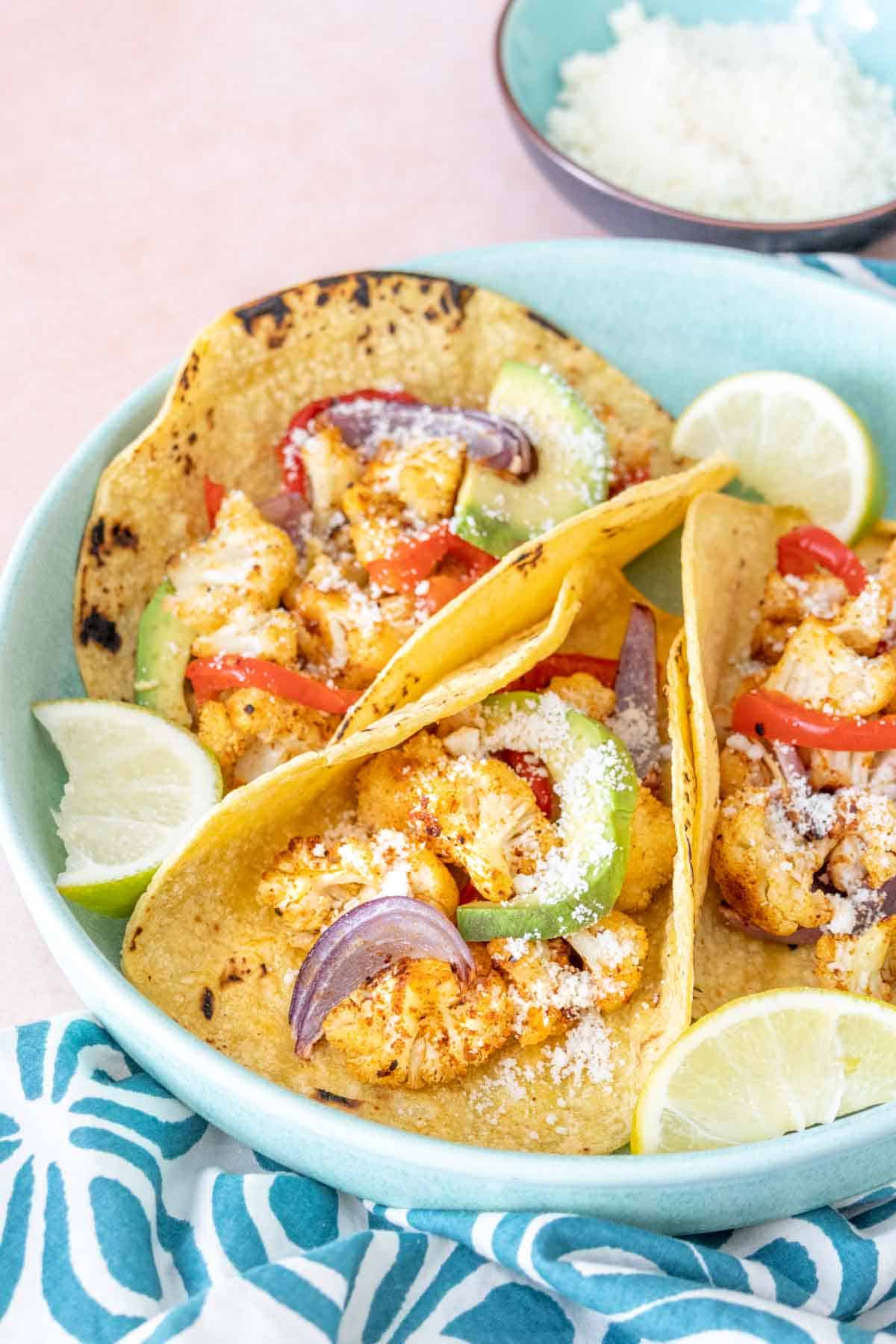
Fava Beans (Broad Beans)
Fava beans are an early legume grown across the world. Grown in pods and shelled, these flat beans are delicious in stews, sautéed, or steamed and added to salads.
While they look similar to lima beans, fava beans are larger with smoother skins and a more “beany” flavor.
Rhubarb
While rhubarb is usually associated with fruit, it’s actually a vegetable. The leaves are inedible, but the stems are often used for desserts.
Tangy and sour, rhubarb has a natural sweetness once cooked. It’s often paired with strawberries, or you can use it on its own to make rhubarb sauce.
Rhubarb has a short season, so be sure to freeze rhubarb and enjoy it for months to come.
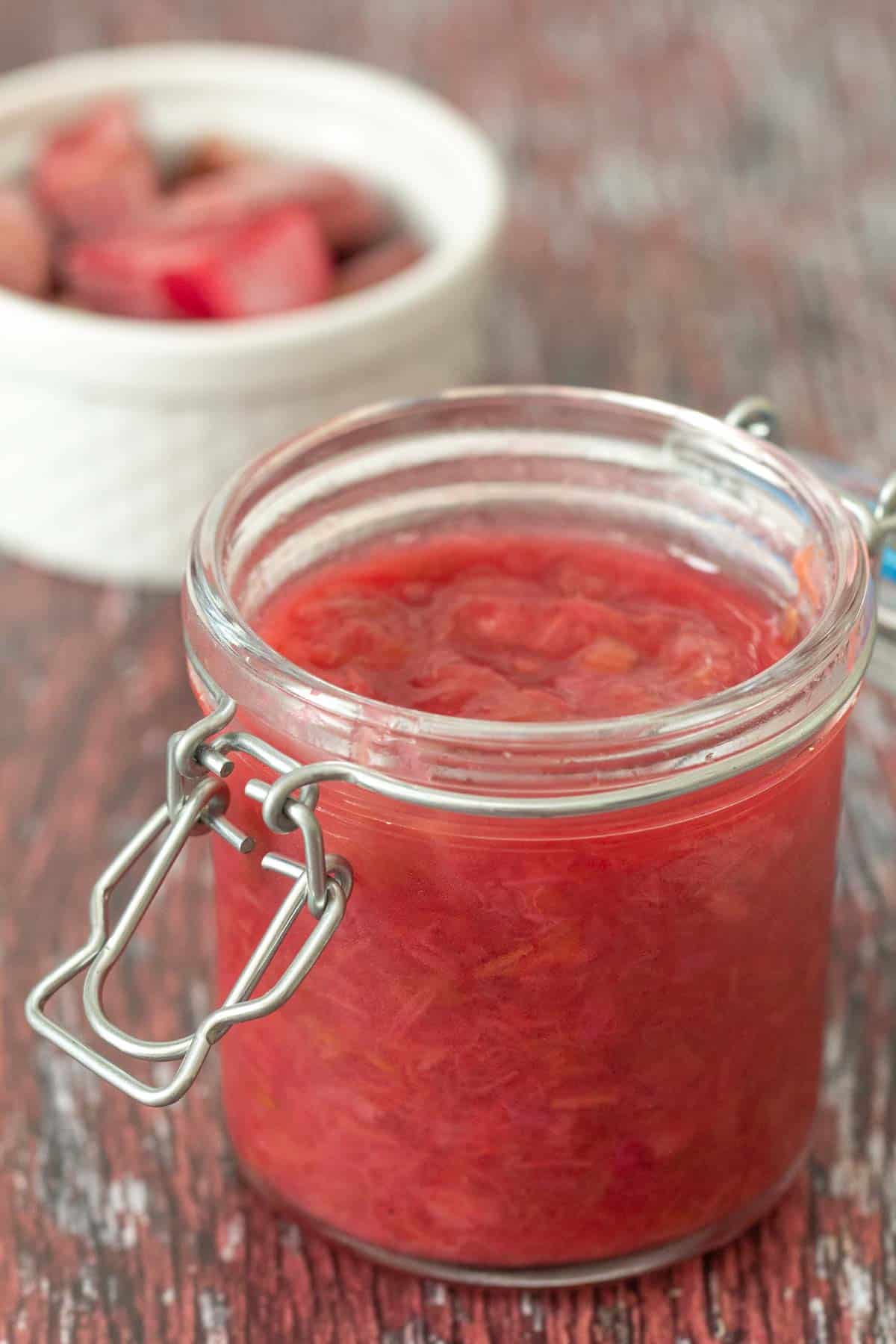
Seek out what spring vegetables are in season in your area and get experimenting!

About Megan
I learned how to cook by exploring seasonal ingredients, and you can too! Meal time shouldn’t be stressful or complicated, and with fresh ingredients and easy methods, I’m here to help you enjoy the time spent in the kitchen. Read more…


